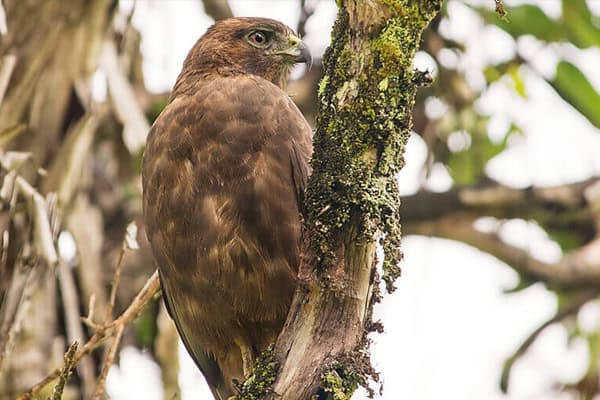7 Types of Woodpeckers in Tennessee (Pictures)
Tennessee is a haven for bird enthusiasts, with seven common woodpeckers species calling it home. These birds are key to the state’s ecosystems. They can be found everywhere, from the Great Smoky Mountains to your backyard.
This article will discuss the unique traits, behaviors, and where to find these woodpeckers. We’ll cover the seven species and the best spots to see them in Tennessee.
From the big Pileated Woodpecker to the small Downy Woodpecker, each species is unique. This guide is perfect for birdwatchers and nature lovers. It shows the beauty and importance of these amazing birds.
Woodpeckers in Tennessee
Tennessee is home to many woodpecker species, each important to the state’s ecosystems. You can find the Pileated Woodpecker, Red-bellied Woodpecker, Downy Woodpecker, and Northern Flicker here. Other common species include the Red-headed Woodpecker, Hairy Woodpecker, and Yellow-bellied Sapsucker.
Overview of Common Species
These woodpeckers show interesting traits and behaviors. The Pileated Woodpecker is big and has a red crest. It can live up to 12 years and there are about 2.6 million in Tennessee. The Hairy Woodpecker lives up to 15 years and has over 8.9 million birds in the state.
The Northern Flicker has spots and unique ways of finding food. It has over 12 million birds in Tennessee but their numbers have dropped by 47% in the last 50 years. The Downy Woodpecker is the smallest and can live up to 11 years. It has a stable population of over 13 million birds.
| Woodpecker Species | Length | Wingspan |
|---|---|---|
| Pileated Woodpecker | 16.5 inches | 29 inches |
| Northern Flicker | 12.5 inches | 20 inches |
| Hairy Woodpecker | 9.25 inches | 15 inches |
| Red-bellied Woodpecker | 9.25 inches | 16 inches |
| Downy Woodpecker | 6.75 inches | N/A |
| Yellow-bellied Sapsucker | 8.5 inches | 16 inches |
| Red-headed Woodpecker | 9.25 inches | 17 inches |
1. Pileated Woodpecker
The Pileated Woodpecker is the biggest bird in North America’s Picidae family. Males are 10-15% heavier than females. They can be up to 19 inches long and have a 29-inch wingspan. Their bright red crest and large, black body make them stand out. The male has red “mustache” stripes on his face too.

Identification Features and Behavior
These birds make a loud call and drum on trees to find carpenter ants and other insects. They are great at making big holes in trees. Each year, they make a new nest in dead or dying trees.
Nesting and Breeding Habits
Each breeding season, Pileated Woodpeckers pick a new place to nest. The female lays 3 to 5 eggs, which take 15-18 days to hatch. After 24-31 days, the young birds leave the nest. They mate for life and help other birds and animals by using their old nests.
Habitat and Range in Tennessee
In Tennessee, Pileated Woodpeckers live all year in forests and wooded areas. They need dead and decaying trees for food and nests. Great places to see them include the Great Smoky Mountains National Park, Tennessee National Wildlife Refuge, and Ensley Bottoms Complex.
2. Red-bellied Woodpecker
The Red-bellied Woodpecker is a medium-sized bird that lives in Tennessee all year. They might not show off much red on their belly, but the bright red on their head is easy to spot. Males have a bright red crown and nape. These birds eat insects, fruits, nuts, and sap. They live in many wooded places, even in cities with big trees.

These woodpeckers have a wingspan of 16 inches and weigh about 2.2 oz. They lay 4 eggs at a time, sometimes up to 6, and take 12 to 14 days to hatch. The young birds leave the nest after 24 to 27 days. In Tennessee, their nests are usually 27 feet high.
Red-bellied Woodpeckers are common in the state of Tennessee all year. They help forests by making cavities for other animals and helping to break down dead trees. Leaving dead trees standing can help these birds and other creatures.
Woodpeckers might drum on wood or metal for a few reasons. They could be looking for food, marking their territory, or making a nest. Drumming to claim territory is common in late winter and spring among species of woodpeckers. To stop this, you can make the drumming spot less appealing or put up woodpecker boxes elsewhere in east Tennessee.
3. Downy Woodpecker
The Downy Woodpecker is a small, charming bird found in Tennessee’s forests and woodlands. It’s the smallest woodpecker in North America, measuring 5.5 to 6.7 inches long with a wingspan of 9.8 to 11.8 inches. They stand out with their black-and-white look, featuring a white back and checkered wings.

Physical Description and Call
Male Downy Woodpeckers sport a bright red patch on their heads, while females do not. They make a high-pitched call that drops in pitch at the end. This call is a key way to identify these species of woodpeckers.
Nesting and Feeding Habits
These birds make new nests each year in dead or dying trees. The female lays 3 to 8 eggs, which she incubates for 12 days. After 18-21 days, the young leave the nest and start living on their own.
Downy Woodpeckers eat mostly insects but also enjoy berries, acorns, and grains. They forage on the smaller branches and twigs of trees.
| Characteristic | Downy Woodpecker |
|---|---|
| Length | 5.5 to 6.7 inches |
| Wingspan | 9.8 to 11.8 inches |
| Weight | 0.95 oz |
| Nesting | Cavity nests in dead or dying trees |
| Clutch Size | 3 to 8 eggs |
| Incubation Period | 12 days |
| Fledgling Period | 18 to 21 days |
| Nest Height | 17 feet above ground |
| Population Trend | Stable |
4. Northern Flicker
The Northern Flicker is a large and eye-catching woodpecker found in North America. It has gray-brown feathers, black-and-white stripes, and a bright white patch on its rump seen when flying. There are two main types: the red-shafted and the yellow-shafted Northern Flicker.

Distinctive Plumage and Subspecies
The red-shafted Northern Flicker has red feathers on its wings and a gray neck. The yellow-shafted form has yellow feathers and a red neck. Both types have black and white stripes on their back and white underparts with black spots.
Behavior and Feeding Preferences
Northern Flickers are special because they often look for food on the ground. They use their long, curved bills to dig for ants, their main food. They also eat fruits, berries, and other insects. Their loud calls are well-known.
These birds often use old nests from previous years instead of making new ones. This saves them work.
Northern Flickers live in North America, from Alaska and Canada to Cuba and Central America. They are about 12.5 inches long, with a 20-inch wingspan, and weigh around 4.6 ounces. This makes them a big woodpecker species. They like to nest in different types of forests in Tennessee, usually about 18 feet off the ground.
5. Red-headed Woodpecker
The Red-headed Woodpecker is a medium-sized bird that catches the eye with its bright red head, white belly, and black and white wings. It’s loved by birdwatchers in Tennessee for its unique look and interesting ways of finding food.

Appearance and Identifying Marks
Both male and female Red-headed Woodpeckers have the same eye-catching look. They have a red head, white belly, and black wings with big white patches. Young birds have a grayish-brown head, making them easy to tell apart from adults.
This bird is about 9.25 inches long and has a wingspan of 17 inches. It weighs around 2.5 ounces. This makes it a light bird among woodpeckers.
Habitat and Feeding Habits
Red-headed Woodpeckers like living in areas with both old trees and open spaces. You can find them in places like forest edges, parks, and golf courses. In Tennessee, they live in different types of woods, including those with deciduous trees, wetlands, and even in some suburbs.
These birds eat a wide variety of foods like insects, fruits, nuts, and small animals. They’re special because they catch insects in mid-air and save extra food in holes and crevices for later.
In West Tennessee, the Red-headed Woodpecker is common all year. But, it’s not as common in other parts of the state. Sadly, its numbers are going down. This is likely because European Starlings are taking over their homes.
6. Hairy Woodpecker
The Hairy Woodpecker is a medium-sized bird that looks a lot like the Downy Woodpecker. But, it has some unique features that make it stand out. It’s often confused with the Downy Woodpecker because they both have black and white feathers.

Distinguishing Features from Downy Woodpecker
The Hairy Woodpecker is much bigger than the Downy, a small species of woodpeckers In Tennessee. It’s about twice the size, measuring 9.25 inches long with a 15-inch wingspan. The Downy is only 6 inches long with an 11-inch wingspan. The Hairy also has a longer beak, as long as its head, while the Downy’s beak is shorter.
The Hairy Woodpecker likes to live in big, old forests. The Downy prefers younger forests and even visits suburban areas. Knowing where they live can help tell them apart.
| Feature | Hairy Woodpecker | Downy Woodpecker |
|---|---|---|
| Size | Average length of 9.25 inches, wingspan of 15 inches | Average length of 6 inches, wingspan of 11 inches |
| Beak | Longer, about the same length as the head | Shorter, noticeably smaller than the head |
| Habitat | Mature, forested areas with larger trees | Younger, second-growth forests and suburban areas |
By knowing these differences, bird lovers can tell the Hairy Woodpecker from the Downy. This is true even when they’re in the same place.
7. Yellow-bellied Sapsucker
The Yellow-bellied Sapsucker is a unique bird in Tennessee. It’s the only migratory woodpecker in the state. These birds live in the northern U.S. and Canada during summer but return to east Tennessee in other seasons. In winter, they move to the southern states, including Tennessee.

Migratory Pattern and Winter Presence
In the non-breeding season, the Yellow-bellied Sapsucker is common in Tennessee. You can find them in open woodlands, orchards, and groves. But, they are one of the rarest breeding birds in Tennessee. They live in a small area in the high-elevation forests near the North Carolina border.
Their breeding area covers Canada and the northeastern U.S. There’s also a special group in the Appalachian Mountains of Virginia, Tennessee, and North Carolina. This group is known as the Appalachian Yellow-bellied Sapsucker.
Sap-Feeding Behavior
The Yellow-bellied Sapsucker is special because it eats mostly tree sap. They use their sharp beaks to make holes in tree trunks. This lets the sap flow out.
They come back to these holes to drink the sap and eat insects that come to it, similar to yellow-bellied sapsuckers. This way of eating makes them different from other woodpeckers.
Where to Find Woodpeckers in Tennessee
Tennessee’s varied landscapes and protected areas are great for seeing these birds. Good spots include the Great Smoky Mountains National Park and the Tennessee National Wildlife Refuge. Other places like Ensley Bottoms Complex, Seven Islands State Birding Park, Brainerd Levee, Frozen Head State Park, and Cross Creeks National Wildlife Refuge are also good.
Check Our Previous Articles:
Final Thoughts:
In the end, Tennessee is a dream spot for birdwatchers, with many woodpecker species to see. From the big Pileated Woodpecker to the tiny Downy Woodpecker, these birds are key to the state’s ecosystems. They help control insects, spread seeds, and make homes for other animals.
With seven types of woodpeckers in Tennessee, like the Red-bellied and Northern Flicker, the state is rich in woodpecker diversity. Keeping their homes and food sources safe helps protect these birds for the future. This way, we can all enjoy their amazing skills for years to come.
If you love birding in Tennessee or just enjoy nature, learning about woodpeckers is a great choice. Their unique ways of finding food and their impact on forests show how special Tennessee’s wildlife is. These birds prove the beauty and strength of nature in Tennessee.







